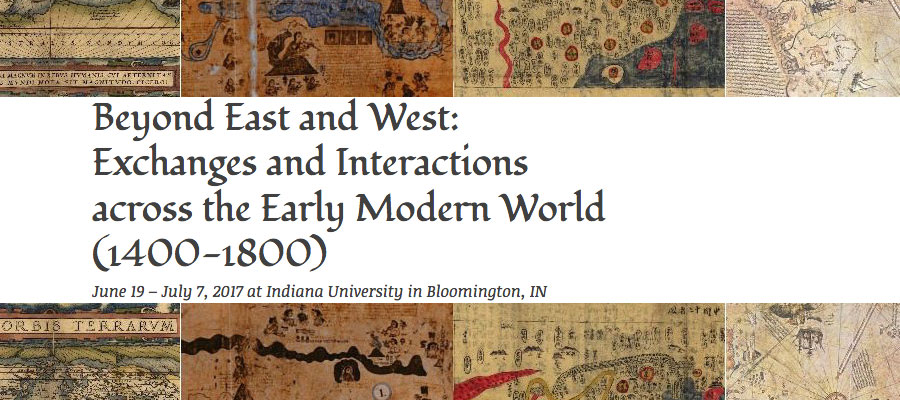Beyond East and West: Exchanges and Interactions across the Early Modern World (1400–1800), NEH Summer Institute for College and University Teachers, Indiana University, Bloomington, IN, June 19–July 7, 2017
The period between 1400-1800 has been studied, until recently, as a time when European societies expanded to the rest of the globe through conquest and commerce. Scholars have convincingly questioned this paradigm in the past decades, and established the agency of non-European societies and communities across the globe. The institute’s aim is to revisit this seminal period through the lens of exchange, interaction, and movement. The early modern world was unified through the near-simultaneous expansion of empires across Eurasia, from England through the Middle East to the Indian subcontinent and China. Consolidated with gunpowder weapons and new administrative technologies, and motivated by inter-imperial competition, these empires connected several parts of the globe through political and commercial networks. In the process, they also laid the ground for the circulation of individuals and communities, objects, germs, and ideas, to an unprecedented extent.
The institute will be organized along three intertwining themes, which will build upon one another: (1) Travelers—Circulating Bodies; (2) Mapping Travel, Mapping Ideas; and (3) Connected Histories—Circulating Ideas. In the first unit, participants will read the accounts of individual travelers from different cultures, who moved across considerable distances and reflected on their journeys. In the second unit, we will discuss the ways in which travelers constructed their prior knowledge on their travel destinations, by considering the practical and ideological role played by maps in the early modern period. In our final unit, we will focus on the ways in which travelers, and the maps, books and manuscripts they carried through their voyages, helped circulate ideas across Eurasia and Africa. We will not only study the exchanges that reveal differences in cultural, political, and religious ideas, but also those that highlight convergences.
